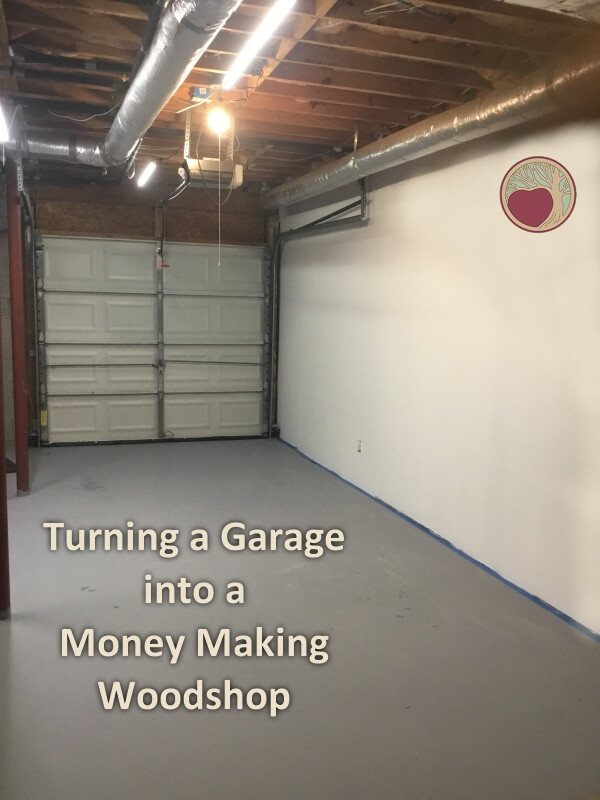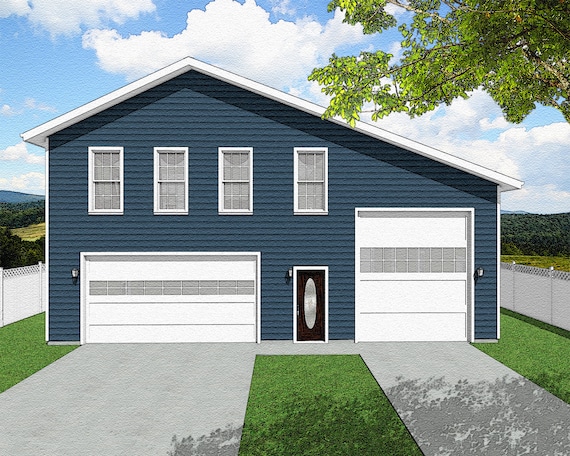
A garage conversion can be a great way for you to make the most of your space. It's also a nice alternative to a basement renovation, and will add a little extra value to your home. These are the key elements to a successful conversion.
Decide how you will use the space. Your garage can be used as a guest room or gym, or simply to park your car. In addition, you can also add architectural elements to make the space more aesthetically pleasing.
A second consideration is how to properly insulation your garage. Proper insulation raises your garage to the same floor level as the rest. It also helps prevent water damage. It is also important to obtain the necessary permits. Depending on how large your project is, the permitting process could take several weeks to complete. It might take six months or less.

Finally, check that your utilities are working properly. The utilities could be in a separate structure or connected to the main residence. Make sure you have enough heating, electricity, and plumbing to power your new space.
It is best to have a consultant or contractor conduct a detailed evaluation of your space. The contractor should be able offer a complete estimate and a timeline.
Begin by making a simple inventory of the garage. This will give you an idea of the space that you will need. The results of this exercise can be used to determine a realistic construction budget.
You should also check with your local council to ensure that the proposed changes meet all requirements. Converting your garage is easy. Federal CDBG funds are eligible for most 2-car garages smaller than 500 sq. feet.

After all the work is done, you will have a functional workspace which is a welcome addition for your home. And if you have young children, this makeover will be fun and safe for them.
Of course, the simplest way to do this is to hire a competent contractor. This is the best approach to make your garage conversion a pleasant experience. But it can also be expensive. It is worth the effort and extra time. This will add beauty and value to your home.
Concluding, a garage conversion can be a great way to add an additional living space to your home. Even though it is not the most luxurious, the novelty of your new space makes it worthwhile.
FAQ
What is it worth to tile a bathroom?
It's worth spending a lot if you plan to do it yourself. A full bathroom remodels an investment. However, quality fixtures and materials are worth the long-term investment when you consider how beautiful a space will be for many years.
The right tiles can make a significant difference in the look and feel of your room. So whether you're planning a small project or a major renovation, here's a quick guide to help you choose the best products for your home.
First, choose the flooring type you wish to use. Common choices include ceramics and porcelain as well as stone and natural wooden. Next, choose a style such as a classic subway tile or a geometric pattern. Choose a color combination.
If you are remodeling a large bathroom, you'll likely need to match the tile with the rest. You could choose to use white subway tiles for the kitchen and bathroom, while using darker colors in other rooms.
Next, consider the size of your project. Is it time to update a small powder room? Or, would you rather have a walkin closet in your master bedroom?
Once you have decided on the scope of the project, visit your local store to view samples. By doing this, you will get an idea of the product's installation methods.
You can also shop online to find great deals on porcelain and ceramic tiles. Many sellers offer discounts and free shipping for bulk orders.
How long does it take for a bathroom remodel?
A bathroom remodel typically takes around two weeks. This can vary depending on how large the job is. Smaller jobs, such as adding a shower stall or installing a vanity, can be completed in a day or two. Larger jobs like removing walls or installing tile floors and plumbing fixtures can take several hours.
The rule of thumb is that you should allow three days for each room. For example, if you have four bathrooms you would need twelve days.
In what order should you renovate a house?
The roof. Second, the plumbing. The electrical wiring is third. Fourth, the walls. Fifth, the floors. Sixth, are the windows. Seventh, the doors. Eighth, is the kitchen. Ninth are the bathrooms. Tenth is the garage.
After you have completed all of these tasks, you will be ready to go to the attic.
If you don't know how to renovate your own house, you might hire somebody who does. Renovation of your house requires patience, effort, time and patience. It is also expensive. Don't be discouraged if you don’t feel up to the task.
Renovations aren’t always inexpensive, but they can make your life easier and save you money in the long term. You will enjoy a more peaceful life if you have a beautiful house.
What are the largest expenses when remodeling a kitchen
There are a few important costs to consider when renovating a kitchen. These include demolition, design fees, permits, materials, contractors, etc. However, these costs are quite small when taken individually. These costs quickly multiply when they are added up.
Demolition is the most costly cost. This includes removing any cabinets, appliances, countertops or flooring. The insulation and drywall must be removed. You must then replace these items with new ones.
Next, you must hire an architect to draw out plans for the space. Next, you must pay for permits to ensure the project meets building codes. The final step is to find someone to carry out the actual construction.
Once the job is complete, you will need to pay the contractor. You could spend anywhere from $20,000 to $50,000, depending on how large the job is. It is crucial to get estimates from several contractors before you hire one.
These costs can be avoided if you plan. You may be able get better material deals or to skip some of the work. You will be able save time and money if you understand what needs to done.
For example, many people try to install their cabinets. People believe that this will save them money since they won't have to hire professionals for installation. It is often more expensive to have professional installation services. A professional can usually complete a job in half of the time that it would take you.
Another way to save money is to buy unfinished materials. Pre-finished materials such as cabinets should be inspected before you purchase them. You can immediately use unfinished materials if you purchase them. You can always make a change if things don't go as you planned.
But sometimes, it isn't worth going through all this hassle. Remember: the best way to save money on any home improvement project is to plan.
What are the main components of a full kitchen renovation?
A full kitchen remodels more than just a new sink and faucet. There are cabinets, countertops as well, lighting fixtures and flooring.
A complete kitchen remodel allows homeowners the opportunity to upgrade their kitchens without any major construction. This allows the homeowner to update their kitchens without having to demolish any existing structures, making it easier for the contractor as well.
There are many services that can be done to your kitchen, including plumbing, electrical, HVAC, painting, and carpentry. A complete kitchen remodeling project may require multiple contractors depending on the size of the job.
It is best to work with professionals who have experience in kitchen remodeling. There are often many moving parts in a kitchen remodel, so small problems can cause delays. DIY is a good option, but make sure to plan ahead and have a back-up plan in case something goes wrong.
Are there any savings on a remodel of a bathroom or kitchen.
Remodeling a kitchen or bathroom is a costly undertaking. It might be more cost-effective to upgrade your home than you think, given how much you spend each month on energy bills.
Small upgrades can help you save thousands of dollars per year. A few easy changes like adding insulation to ceilings or walls can reduce heating/cooling costs by as much as 30%. Even a small addition can increase comfort and resale values.
It is crucial to consider durability and ease of maintenance when renovating. Materials such as porcelain tile, stainless steel appliances, and solid wood flooring last longer and require fewer repairs than vinyl or laminate countertops.
It is possible to reduce utility costs by replacing older fixtures with more modern models. Low-flow faucets and showerheads can reduce water consumption by as much as 50%. Replacing inefficient lighting with compact fluorescent bulbs can cut electricity consumption by up to 75 percent.
Statistics
- Following the effects of COVID-19, homeowners spent 48% less on their renovation costs than before the pandemic 1 2 (rocketmortgage.com)
- 5%Roof2 – 4%Standard Bedroom1 – 3% (rocketmortgage.com)
- 57%Low-end average cost: $26,214Additional home value: $18,927Return on investment: (rocketmortgage.com)
- 55%Universal average cost: $38,813Additional home value: $22,475Return on investment: 58%Mid-range average cost: $24,424Additional home value: $14,671Return on investment: (rocketmortgage.com)
- bathroom5%Siding3 – 5%Windows3 – 4%Patio or backyard2 – (rocketmortgage.com)
External Links
How To
Do home renovations require a building permit
If you're going to renovate your house, make sure you do it right. For any project that changes the property's exterior walls, building permits are required. This covers adding on, remodeling, or replacing windows.
However, if you have decided to renovate without a building permit, you could face serious consequences. If someone is hurt during the renovation, you could face legal action or fines.
It is required that all persons working on residential structures obtain a building permits before they start work. A majority of cities and counties require homeowners to obtain a building permit before beginning any construction project.
Building permits are typically issued by local government agencies. But they can also be obtained online or via phone.
A building permit would be the best because it will ensure that the project conforms to local safety standards, fire codes, as well as structural integrity regulations.
A building inspector, for example, will check that the structure meets all current building code requirements. This includes proper ventilation, fire suppression, electrical wiring, plumbing and heating.
Inspectors will also inspect the deck to make sure the planks that were used for construction are strong enough to withstand any weight. Inspectors will look out for water damage, cracks and other issues that could affect the structure's stability.
Contractors may begin work on renovations once the permit has been approved. If the permit is not obtained, contractors could be fined and even arrested.